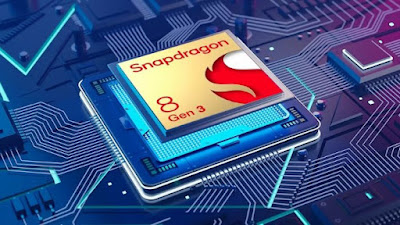Mediatek is expected to soon launch the Dimensity 9300 chipset. According to previous reports by Digital Chat Station, the chipset will feature four Cortex-X4 cores and four Cortex-A720 units, with no low-power A520 cores. Today, the same source provided further information about the CPU clock speeds, claiming that the Dimensity 9300 will be 10% faster than the Qualcomm Snapdragon 8 Gen 3.
Mediatek is expected to adopt a 1+3+4 architecture, featuring 1x3.25 GHz Cortex-X4, 3x2.85 GHz Cortex-X4, and 4x2.0 GHz Cortex-A720. Additionally, an Immortalis-G720 GPU is expected to be included. This is in contrast to the Snapdragon's 1+5+2 setup, which includes 1x3.19 GHz Cortex-X4, 5x2.96 GHz Cortex-A720, and 2x2.27 GHz Cortex-A520.
While the combination of the Snapdragon 8 Gen 3 is fairly unorthodox, Mediatek is trying something unseen before by omitting the low-power cores. It remains to be seen how this will perform in real-life scenarios and whether manufacturers will be able to avoid overheating issues and extract the chip's otherwise huge potential.
While the combination of the Snapdragon 8 Gen 3 is fairly unorthodox, Mediatek is trying something unseen before by omitting the low-power cores. It remains to be seen how this will perform in real-life scenarios and whether manufacturers will be able to avoid overheating issues and extract the chip's otherwise huge potential.
Mediatek is expected to soon launch the Dimensity 9300 chipset.
According to previous reports by Digital Chat Station, the chipset will
feature four Cortex-X4 cores and four Cortex-A720 units, with no
low-power A520 cores. Today, the same source provided further
information about the CPU clock speeds, claiming that the Dimensity 9300
will be 10% faster than the Qualcomm Snapdragon 8 Gen 3.
Mediatek
is expected to adopt a 1+3+4 architecture, featuring 1x3.25 GHz
Cortex-X4, 3x2.85 GHz Cortex-X4, and 4x2.0 GHz Cortex-A720.
Additionally, an Immortalis-G720 GPU is expected to be included. This is
in contrast to the Snapdragon's 1+5+2 setup, which includes 1x3.19 GHz
Cortex-X4, 5x2.96 GHz Cortex-A720, and 2x2.27 GHz Cortex-A520.
While the combination of the Snapdragon 8 Gen 3 is fairly unorthodox, Mediatek is trying something unseen before by omitting the low-power cores. It remains to be seen how this will perform in real-life scenarios and whether manufacturers will be able to avoid overheating issues and extract the chip's otherwise huge potential.
While the combination of the Snapdragon 8 Gen 3 is fairly unorthodox, Mediatek is trying something unseen before by omitting the low-power cores. It remains to be seen how this will perform in real-life scenarios and whether manufacturers will be able to avoid overheating issues and extract the chip's otherwise huge potential.

0 Response to "Dimensity 9300 faster than Snapdragon 8 Gen 3"
Post a Comment